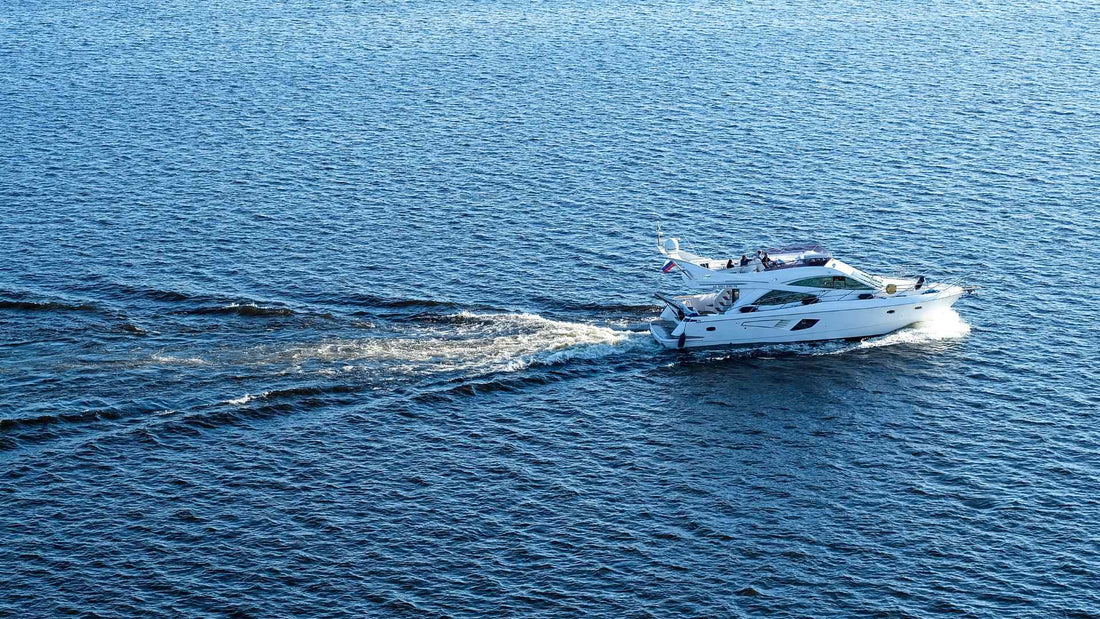
How to Obtain a U.S. Cruising Permit for Your Vessel
Nicholas HeislerShare
Embarking on a voyage through U.S. waters with a foreign-flagged vessel offers an array of scenic routes and destinations. To ensure a seamless journey, securing a U.S. cruising permit is essential. This permit not only simplifies entry procedures but also exempts your vessel from certain taxes and fees. In this comprehensive guide, we'll walk you through the process of obtaining a U.S. cruising permit, ensuring you're well-prepared for your nautical adventure.
1. Introduction to U.S. Cruising Permits
A U.S. cruising permit is a document issued by U.S. Customs and Border Protection (CBP) that allows foreign-flagged pleasure vessels to navigate U.S. waters without undergoing formal entry and clearance at every port. This permit is particularly beneficial as it:
- Simplifies Port Entries: Eliminates the need to file manifests and obtain permits at each U.S. port of call.
- Reduces Fees: Exempts the vessel from tonnage taxes and entry or clearance fees at subsequent ports after the initial entry.
By obtaining this permit, boaters can enjoy a more relaxed and cost-effective cruising experience in U.S. territorial waters.
2. Eligibility Criteria for a Cruising Permit
Before applying, it's crucial to determine if your vessel meets the eligibility requirements:
- Vessel Ownership Requirements: The vessel must be owned by individuals or entities established outside the U.S.
- Flag State Reciprocity: The vessel's country of registration must have a reciprocal agreement with the U.S. that allows U.S.-flagged vessels similar privileges. Countries with such agreements include Canada, the United Kingdom, Australia, and several others.
- Vessel Usage Restrictions: The permit is exclusively for pleasure vessels. Engaging in commercial activities, such as charters or transporting goods, is prohibited under this permit.
Ensuring your vessel aligns with these criteria is the first step toward a successful application.
3. Pre-Arrival Preparations
Proper preparation can expedite the permitting process:
Documentation Checklist:
- Vessel Registration Documents: Proof of the vessel's current registration under a foreign flag.
- Proof of Ownership: Documentation verifying the owner's identity and ownership stake.
- Crew and Passenger Passports: Valid passports for everyone on board.
- Visas: Depending on nationality, crew and passengers may require B1/B2 visas for entry into the U.S.
Familiarization with Reporting Requirements:
- Arrival Reporting: Understand the necessity of reporting your arrival to CBP immediately upon entering U.S. waters.
- CBP ROAM App: Download and set up the CBP Reporting Offsite Arrival - Mobile (ROAM) application. This app facilitates remote reporting and can streamline the entry process.
Having these documents organized and understanding reporting protocols will make your arrival smoother.
4. Arrival Procedures in U.S. Waters
Upon reaching U.S. territory, adhere to the following steps:
Immediate Reporting Obligations:
Report Arrival: Immediately notify CBP of your arrival. Utilizing the CBP ROAM app allows for efficient and timely reporting.
Formal Vessel Entry Process:
Complete CBP Form 1300: Within 48 hours of arrival, submit the Vessel Entrance or Clearance Statement (CBP Form 1300) to the nearest CBP office.
Payment of Fees: Pay any applicable entry fees during this submission.
Application for the Cruising Permit:
Submit Request: Apply to the CBP Port Director at your initial port of entry for the cruising permit.
Validity: Once issued, the permit is valid for up to one year, allowing unrestricted movement between U.S. ports without additional formalities.
Timely compliance with these procedures ensures legal navigation within U.S. waters.
5. Navigating U.S. Waters with a Cruising Permit
With your permit in hand, it's important to understand the operational guidelines:
Movement Between Ports:
Reporting Movements: While the permit allows movement between ports without formal entry and clearance, it's advisable to inform local CBP offices when moving between different jurisdictions.
Departures to Foreign Ports: Notify CBP when departing U.S. waters for a foreign destination.
Compliance with Additional Regulations:
Notice of Arrival/Departure: For vessels meeting certain criteria, filing Notices of Arrival or Departure with the National Vessel Movement Center may be required.
State Regulations: Be aware of and comply with state-specific boating laws, which may include registration requirements or taxation.
Staying informed and compliant with these regulations will help avoid potential issues during your voyage.
6. Renewal and Expiry of the Cruising Permit
Understanding the renewal process is vital for continuous cruising:
Conditions for Renewal:
Mandatory Absence: Upon permit expiry, the vessel must remain outside U.S. waters for at least 15 consecutive days before reapplying.
Re-entry from Foreign Port: Renewal applications are only considered if the vessel arrives from a foreign port after the mandatory absence.
Surrendering the Permit:
Upon Departure: It's advisable to surrender the cruising permit to CBP when leaving U.S. waters to facilitate future re-entry and permit issuance.
Short Trips: Brief excursions to nearby foreign waters do not satisfy the 15-day absence requirement for renewal purposes.
Proper management of your permit's validity ensures uninterrupted enjoyment of U.S. cruising grounds.
7. Common Challenges and Considerations
Being aware of potential challenges can help in proactive planning:
Variations in CBP Practices:
Port-Specific Differences: Procedures and interpretations of regulations may vary between different CBP ports. It's beneficial to contact the CBP office at your intended port of entry ahead of time to understand specific requirements.
Impact of Vessel Sale or Charter:
Restrictions: Offering the vessel for sale or engaging in charter activities to U.S. residents while under a cruising permit may violate permit conditions and U.S. regulations.
Duty Implications: Vessels intended for sale or charter in the U.S. may be subject to import duties and different regulatory requirements.
Consulting with maritime professionals or customs brokers can provide clarity and assist in navigating these complexities.
Know Before You Go
Securing a U.S. cruising permit is a pivotal step for foreign-flagged vessels aiming to explore the diverse and picturesque waters of the United States. By adhering to the outlined procedures and maintaining compliance with all regulations, boaters can look forward to a seamless and enriching cruising experience.
Captains Preferred Products cannot and does not give legal advice. Always stay updated on any regulatory changes in regions you will be visiting and consider seeking professional advice to navigate the process effectively.
When it comes to keeping your boat clean, look to Captains Preferred Products' boat cleaners and chemicals. Find everything you need to keep your vessel squeaky clean all season - always at the best prices.




